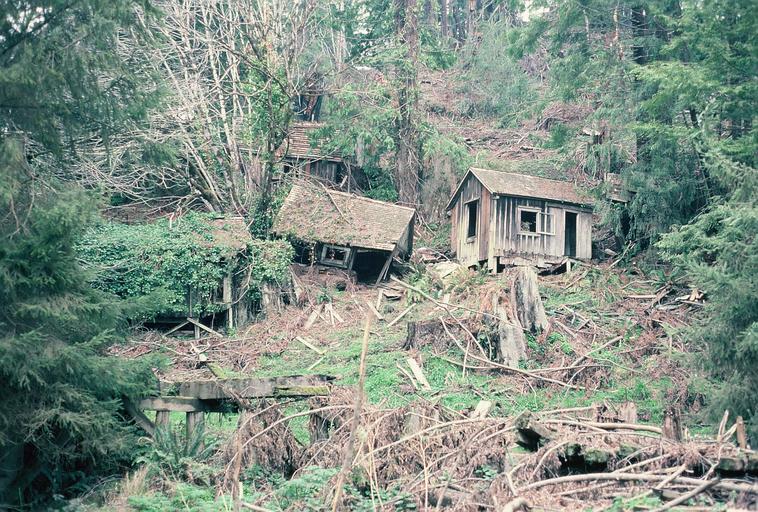MAKE A MEME
View Large Image

| View Original: | Historic_Milling_Town_of_Falk.jpg (1818x1228) | |||
| Download: | Original | Medium | Small | Thumb |
| Courtesy of: | www.flickr.com | More Like This | ||
| Keywords: history historic mill trees california antique landscape nature american history americanhistory education past outdoor In 1884, the entrepreneur Noah Falk began timber operations along the South Fork of Elk River. The mill town of Falk was built along the river and included cookhouses, bachelor cabins, family homes, a general store, post office, and dance hall. Four-hundred workers and family members of the Falk operations inhabited the town. By 1937, high operating cost and low shipping volume forced the mill into closure. Many residents stayed in town and paid $5 a month rent while commuting to Eureka, California for work. By 1940, only 12 people remained. Nine years later the railroad tracks were pulled. Charlie Webb was hired as a caretaker of what had become the Falk ghost town. By 1979, because of hazard and liability to the lumber company, the majority of the buildings were bulldozed and burned. There are currently a variety of remnant features from the historic milling town of Falk. A recent survey of the area recorded the presence of outlying lumber camps, and patterns of vegetation resulting from residential use and historic logging practices. The two main historic structures still standing is the craftsman house and train barn. The house is not accessible and is a safety hazard. The train barn was moved in 2008 and is now the Headwaters Education Center located .5 miles on the Elk River trail. The main evidence of the town is the landscape alterations. A variety of exotic ornamental species mark the location of home fronts and entrance paths. In addition, historic orchards, cleared land, antique bottles, ceramic, tile, milled lumber, and a variety of other artifacts are scattered throughout the reserve. Historic photo approved for BLM use. In 1884, the entrepreneur Noah Falk began timber operations along the South Fork of Elk River. The mill town of Falk was built along the river and included cookhouses, bachelor cabins, family homes, a general store, post office, and dance hall. Four-hundred workers and family members of the Falk operations inhabited the town. By 1937, high operating cost and low shipping volume forced the mill into closure. Many residents stayed in town and paid $5 a month rent while commuting to Eureka, California for work. By 1940, only 12 people remained. Nine years later the railroad tracks were pulled. Charlie Webb was hired as a caretaker of what had become the Falk ghost town. By 1979, because of hazard and liability to the lumber company, the majority of the buildings were bulldozed and burned. There are currently a variety of remnant features from the historic milling town of Falk. A recent survey of the area recorded the presence of outlying lumber camps, and patterns of vegetation resulting from residential use and historic logging practices. The two main historic structures still standing is the craftsman house and train barn. The house is not accessible and is a safety hazard. The train barn was moved in 2008 and is now the Headwaters Education Center located .5 miles on the Elk River trail. The main evidence of the town is the landscape alterations. A variety of exotic ornamental species mark the location of home fronts and entrance paths. In addition, historic orchards, cleared land, antique bottles, ceramic, tile, milled lumber, and a variety of other artifacts are scattered throughout the reserve. Historic photo approved for BLM use. | ||||